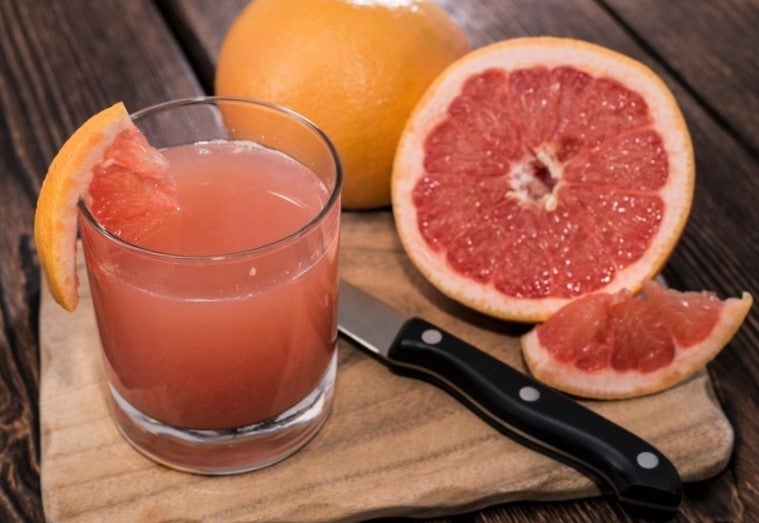The Best Foods to Help You Lose Weight
Obesity is one of the largest causes of mortality within the United States, with 73% of adults recognized as overweight or obese; of that figure, 10% are severely obese, with a body mass index in excess of 40. What makes obesity such a frightening health issue is the wide range of symptoms and complications that follow in its wake, with the heightened risk of heart disease, stroke, gallstones, infertility, osteoarthritis, and metabolic syndrome all being tied to a dangerously unhealthy body weight. There are many causes for weight gain – such as certain antidepressants, a naturally slow metabolism, or conditions such as hypothyroidism – but the simplest cause is the consumption of excess calories, which the body doesn’t need after performing its daily motions and exercises.
Yes, we always need to keep our bodies energized and nourished, but once these criteria have been satisfied, this is when one initiates the process of weight gain. There is no magic formula to getting our bodies down to a healthy weight, and nor is there one single magic foodstuff: there are only the right foods to incorporate into your diet, which should be consumed in conjunction with regular exercise and proper portion control. Many foods quickly create the sensation of fullness, or supply you with a high level of energy from one small serving, so let’s take a look at the ones you should be putting into your diet to help you lose weight.
Sausage and eggs for breakfast

You may be surprised to find this on a list of weight-loss foods, particularly given the high salt and fat content of a pan-fried breakfast, but starting your day with a protein-rich meal is actually a prime way of keeping energized until the afternoon. The effects of a high-protein breakfast, courtesy of the meat contained in the sausages (as well as any extra bacon you wish to put on your plate) and the naturally high source of protein found in eggs, are such that you stay fuller for longer and thereby mitigate the need for snacking. Meat products are also a strong form of slow-release energy, as is wholegrain toast thanks to its high levels of carbohydrates, so while it may be seen as the less healthy option, a cooked breakfast is actually an effective means of streamlining your calory intake. Better yet, this meal is likely to contain a far reduced sugar content than most cereals, many of which are loaded with artificial sweeteners or fructose-heavy dried fruits.
You can also modify your breakfast with a handful of crisp lettuce leaves – which themselves possess a high water content and provide the sensation of fullness with very few calories – or a small helping of beans. The benefit of beans, beside their versatility which allows to be served with just about any savory meal, is their rich source of fiber that takes a long time to digest. The positive of this is the longer-lasting feeling of fullness, preventing you from snacking in order to fill the hole in your stomach.
Yogurt
Thanks to its high concentration of ‘good’ bacteria, aiding more efficient digestion and overall improved gut health, unpasteurized yogurt is often at the top of many fitness experts’ list of weight-loss foods. Rich in protein, with 12 grams of the stuff found in every 200 grams of yogurt, there are plenty of other energy-boosting perks to be enjoyed when increasing your yogurt intake. Thanks to the high volumes of milk that go into making unfiltered milk – or Greek yogurt, as it’s otherwise known – there is an ample supply of calcium in yogurt: a single cup offers more than 45% of your daily calcium requirement.
The important factor of calcium is that it assists thermogenesis, a process which in turn aids the speed of your metabolism. Thus, with this accelerated rate of energy consumption, yogurt can indirectly help your body burn more calories; and, thanks to the effects of fullness from the amount of protein found in yogurt, the person eating it will have their hunger satisfied for longer periods of time than if they had eaten something else.
Grapefruit
The pretty pink fruit with the sharp citric taste is often heralded as something of a low-key superfood, thanks to its high concentration of vitamin C and appetite-suppressing qualities. But there are a whole host of others benefits to eating grapefruit, with its most commonly cited suggestion being that those striving to lose weight should increase their consumption of grapefruit juice. This is where the bitter taste of grapefruit works in its favor, as it is such an acquired taste that few people are capable of drinking large quantities of it in one go, and are therefore able to keep a close eye on their intake of fructose and calories.

While grapefruit has plenty of incidental health benefits - such as the protection of your immune system, a rich source of fiber to assist digestion, and a healthy heaping of antioxidants to protect against heart disease - it is the sensation of fullness which grapefruit affords that has earned it the reputation as a weight-loss food. This again stems from its high fiber content, and it’s worth noting that grapefruit’s protection of the immune system, with almost 60% of your daily recommended vitamin C content found in a single grapefruit, is a key factor in keeping your body healthy in order to recover from the strain of physical exercise while trying to lose weight.
An important aspect to losing weight is the understanding that it won’t occur overnight; it is a lengthy and intensive process that requires determination and focus. You will want a gradual incorporation of gentle to vigorous exercise into your lifestyle, as not to put a dangerous amount of pressure on your heart, with some of the best practices including swimming, jogging or brisk walking, and using a skipping rope. This coupled with a healthy, low-fat diet is the healthiest way you can lose weight at a safe and manageable level.
We’re here to help, too. Buffalo Market doesn’t just provide top-tier organic produce for homes and businesses all across the country, but we also have a number of blogs to help you navigate the diverse and exciting world of organic living. One of our sites is a recipes page, loaded with healthy meal ideas to direct you toward a fresher and more nutritious diet. Why not take a look and see what low-fat, high-energy dishes inspire you today?

